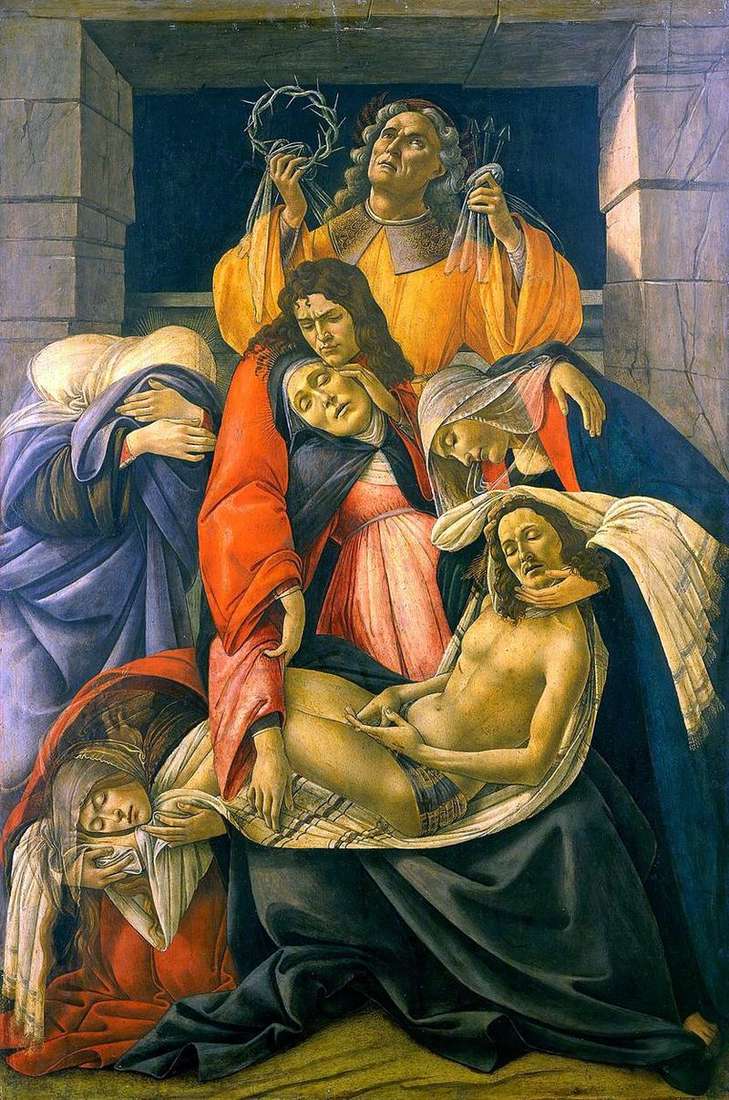
“In the Church of St. Maria Maggiore in Florence near the chapel of Panchatika there is a very well-written Lament for Christ with small figures” Vasari.
Botticelli is increasingly revealing the dark side of life. He lived under one roof with his brother Simone, convinced of the “pianoni”, and experienced a strong influence of Fra Girolamo, which could not but leave a deep trace in his painting.
This is reflected in his appeal to religious subjects and in the most dramatic depth and expression of their interpretation by the artist. The feeling of tragedy grows in his soul, reaching apogee in “Drink.”
This is eloquently evidenced by two altar images: “The situation in the coffin” from the Munich Pinakothek and “Lamentation of Christ.” The artist experiences the Christian drama primarily as a human grief, as an endless sorrow for an innocent victim, who has passed through the cross way of suffering and shameful execution. This feeling overwhelms the master’s soul, and although the theme of “Lamentation” has its deep dogmatic meaning, it still dominates in both of its compositions “Pieta.” The power of experience captures each of the characters and unites them in a pathetic whole. The content is conveyed by the language of the line and color, which has undergone a dramatic change in the work of the master by this time.
The paintings date from around 1495 and were respectively in the church of San Paolino and Santa Maria Maggiore.
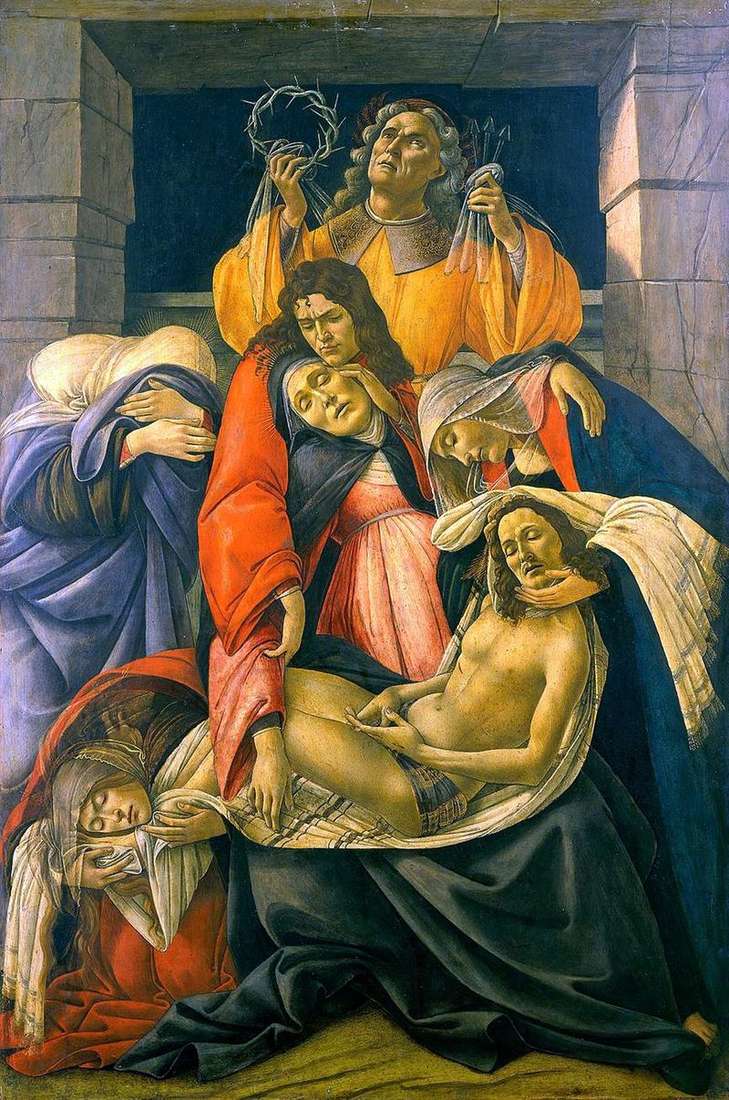 Pieta (Lamentation) by Sandro Botticelli
Pieta (Lamentation) by Sandro Botticelli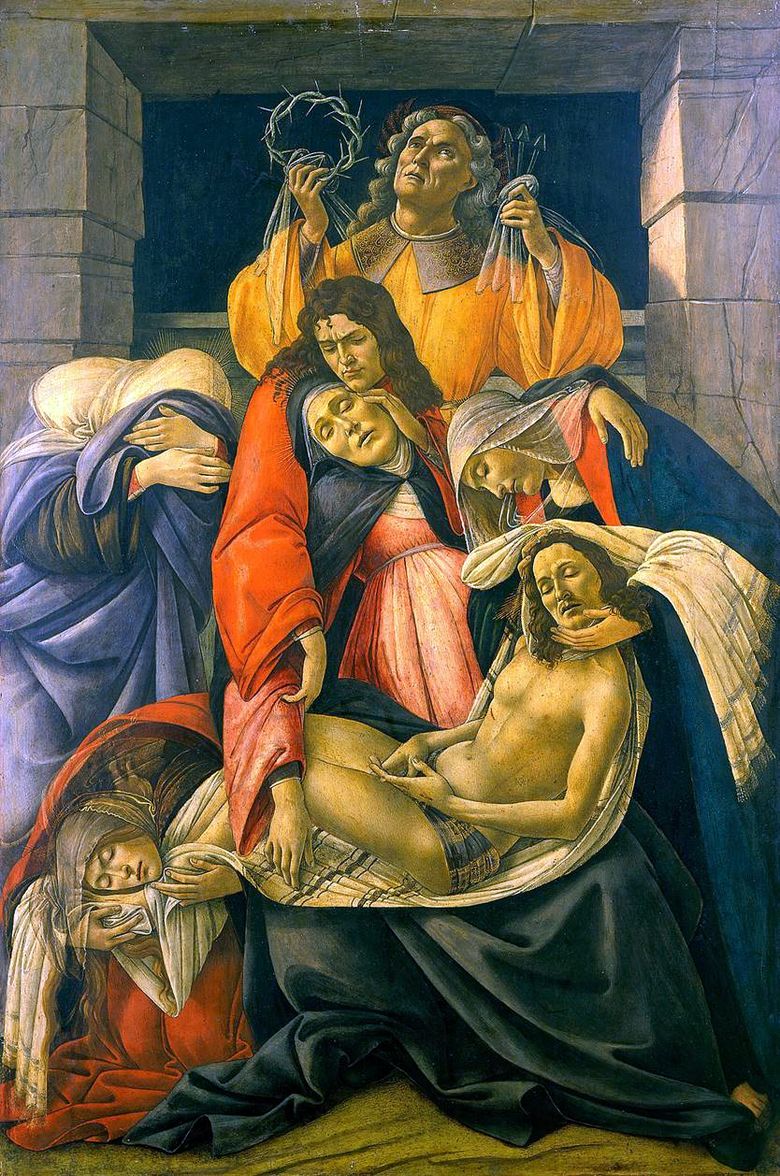 Deuil du Christ – Sandro Botticelli
Deuil du Christ – Sandro Botticelli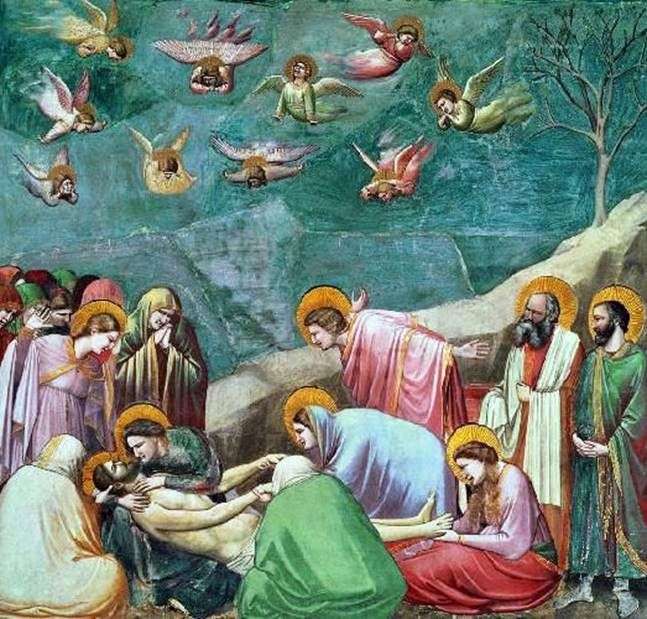 Lamentation of Christ by Giotto di Bondone
Lamentation of Christ by Giotto di Bondone Pieta, or Lamentation of Christ by El Greco
Pieta, or Lamentation of Christ by El Greco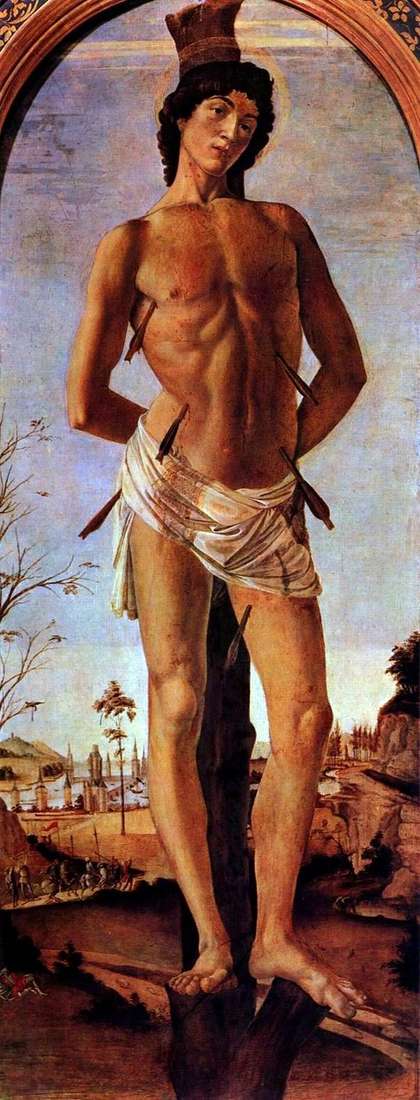 Saint Sebastian by Sandro Botticelli
Saint Sebastian by Sandro Botticelli Lamentation of Christ by Giovanni Bellini
Lamentation of Christ by Giovanni Bellini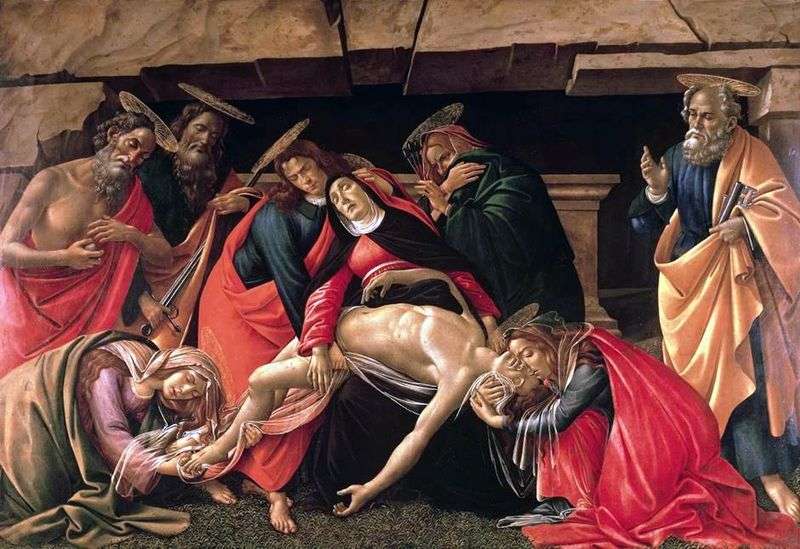 The situation in the grave is Sandro Botticelli
The situation in the grave is Sandro Botticelli Adoration of the Magi. The altar of Zanobi by Sandro Botticelli
Adoration of the Magi. The altar of Zanobi by Sandro Botticelli